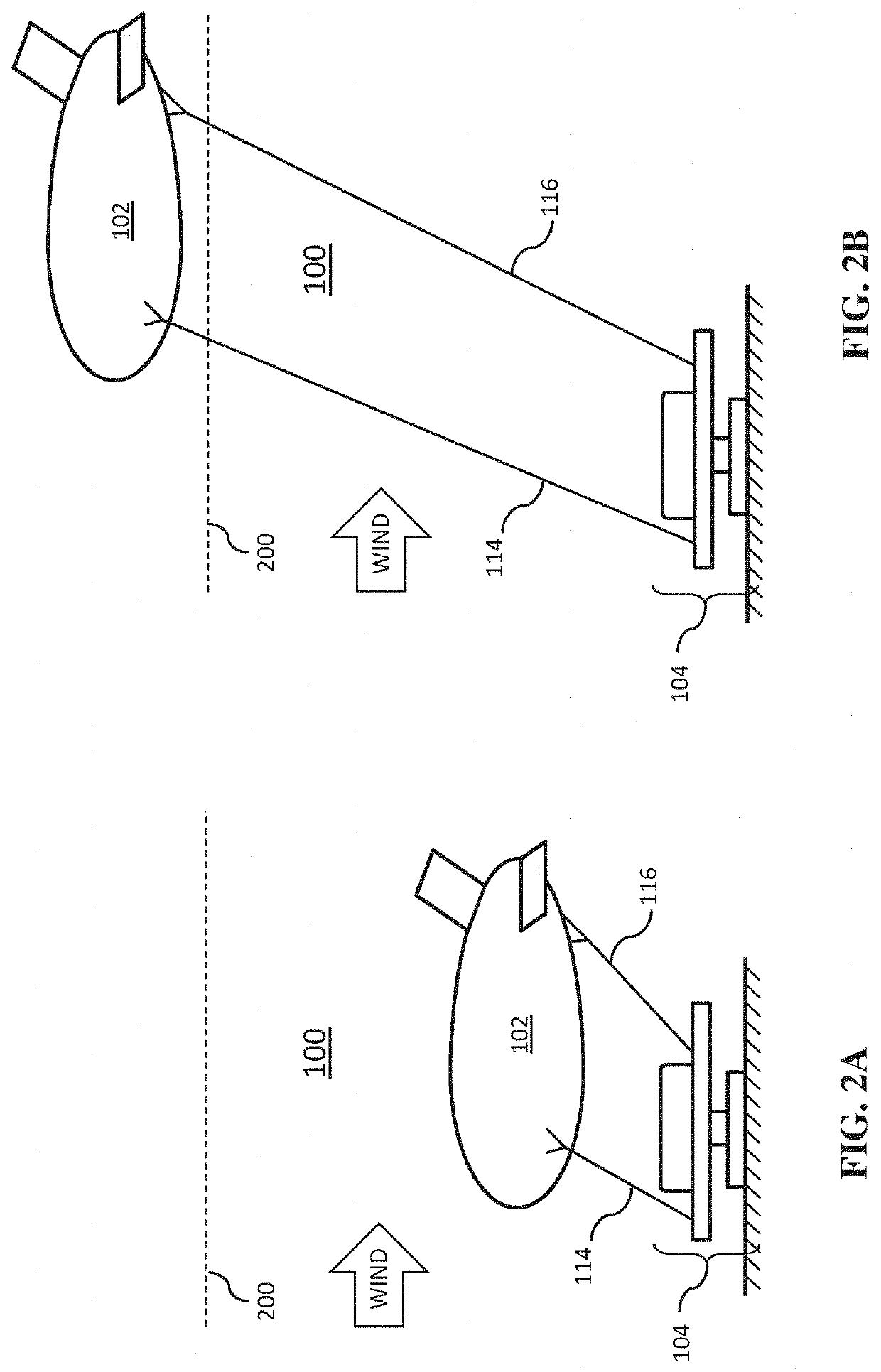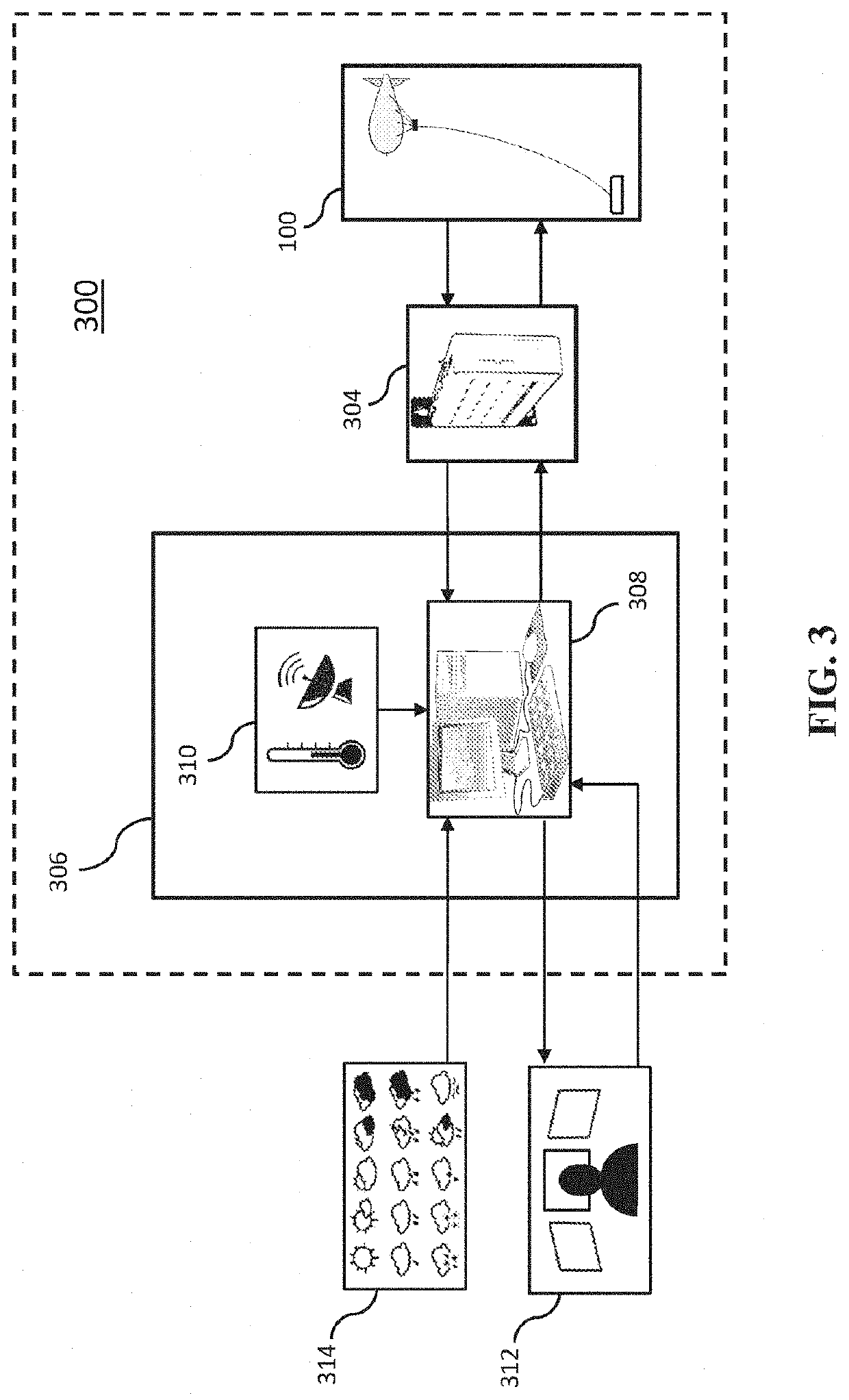Systems and methods for automated, lighter-than-air airborne platform
a technology of airborne platforms and control systems, applied in the direction of balloon aircrafts, instruments, tethered aircraft, etc., can solve the problems of increasing aerostat operating costs, affecting the safety of human crew members, and unable to overcome the disadvantages of aerostat systems
- Summary
- Abstract
- Description
- Claims
- Application Information
AI Technical Summary
Benefits of technology
Problems solved by technology
Method used
Image
Examples
Embodiment Construction
[0031]FIG. 1 is a schematic diagram depicting two cross-sectional views of major mechanical components of an illustrative automated aerostat system 100 in a first state of operation according to an embodiment of the invention. The assembly 100 comprises an aerostat 102, here depicted in a docked or grounded state of operation, and a ground platform 104. The ground platform 104 comprises a fixed ground contactor or base 106, a bearing mechanism or rotator 108 that rotates around its vertical axis with respect to the base 106, a main platform 110 that rotates upon the rotator 108, and a cradle 112 within which the aerostat 102 rests when in a docked state. The cradle 112 may comprise a soft pad or pads possessing or possessing together a concavity or groove on its upper surface, or may comprise flat plates, nose cones, inflated tubes, bars, or other structures meant to interface with the aerostat while in the docked position. The aerostat 102 is connected to the main platform 110 by a...
PUM
 Login to View More
Login to View More Abstract
Description
Claims
Application Information
 Login to View More
Login to View More - R&D
- Intellectual Property
- Life Sciences
- Materials
- Tech Scout
- Unparalleled Data Quality
- Higher Quality Content
- 60% Fewer Hallucinations
Browse by: Latest US Patents, China's latest patents, Technical Efficacy Thesaurus, Application Domain, Technology Topic, Popular Technical Reports.
© 2025 PatSnap. All rights reserved.Legal|Privacy policy|Modern Slavery Act Transparency Statement|Sitemap|About US| Contact US: help@patsnap.com



